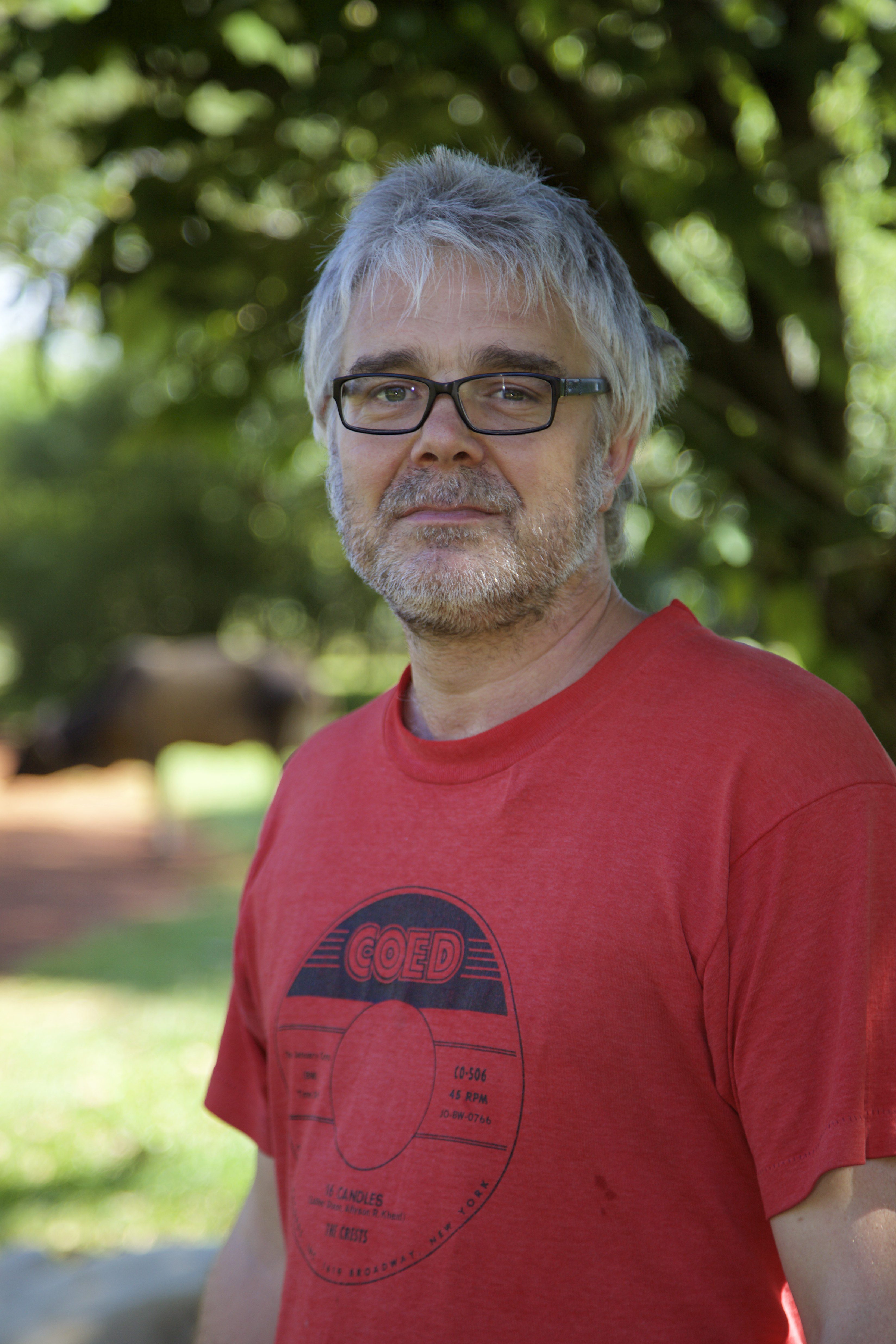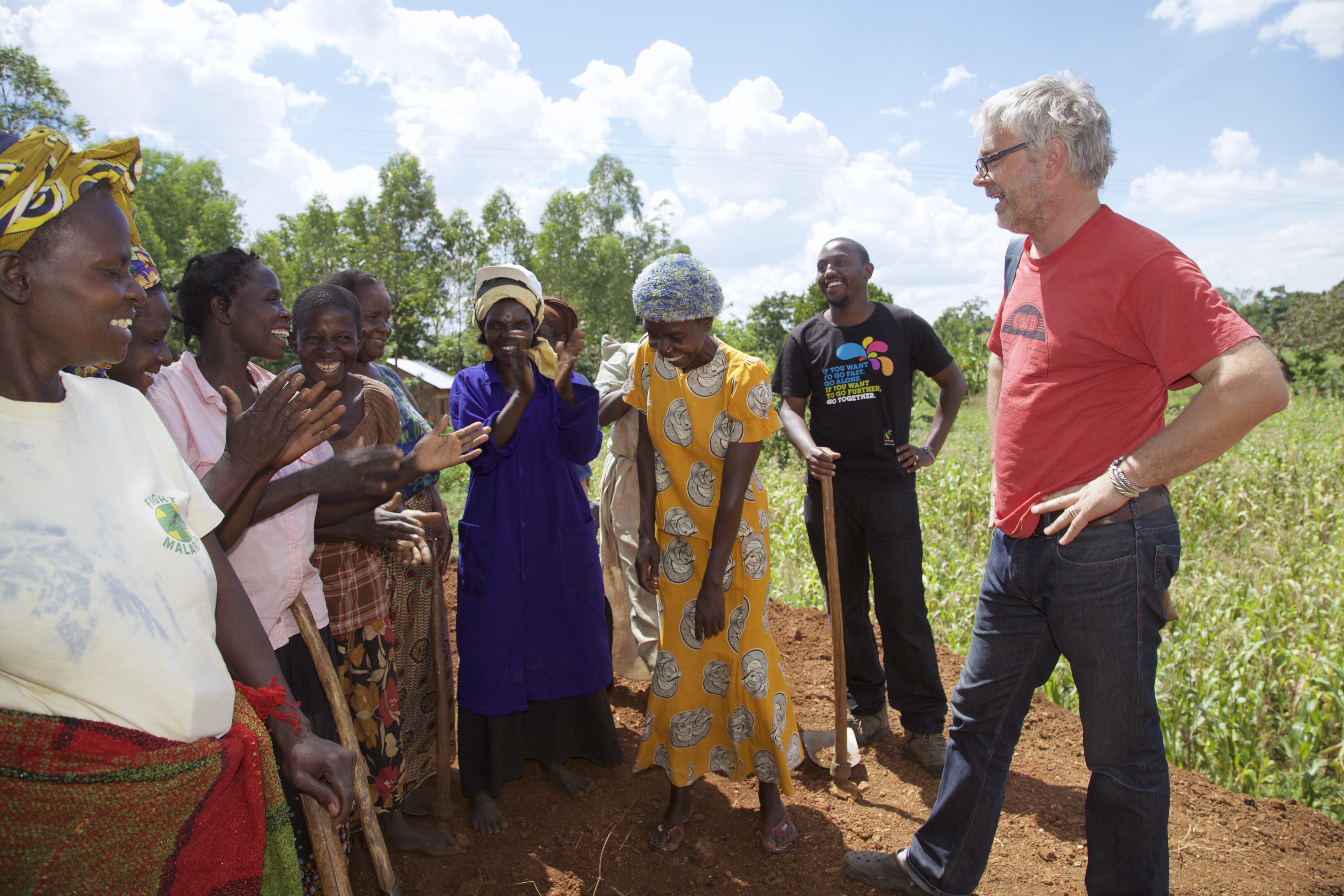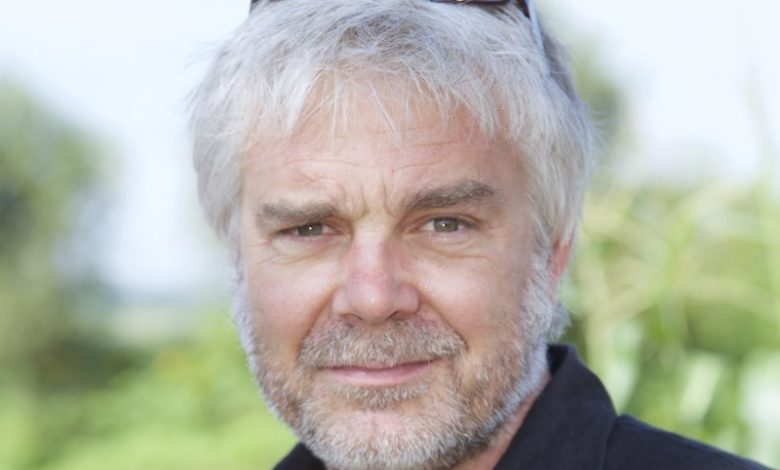Honoured by Royalty: Greg Valerio
Register to get 1 free article
Reveal the article below by registering for our email newsletter.
Want unlimited access? View Plans
Already have an account? Sign in
After recently being honoured with an MBE, the work Greg Valerio has done with artisanal and small-scale miners in the jewellery industry is second-to-none. TOM DAVIS sat down with the jeweller and activist to hear more about his experiences and where he sees the future of Fairtrade gold
[divider style=”solid” top=”20″ bottom=”20″]
Tell us a bit about yourself and how you got into the jewellery industry
I got into the jewellery trade by accident, I was running my own charity and I really became very convinced that actually the solution to global poverty is trade, not aid. That’s why I formed a company called Cred, in 1996, where I started selling arts and crafts and jewellery from different parts of the world and the only product that sold well and profitably was jewellery.
By default I ended up with an aspirational Fairtrade jewellery company named Cred. That’s it in a nutshell, it was a bit of an accident which left me in a position asking the question ‘what does Fairtrade in jewellery look like?’ In the late Nineties there was no definition, so I talked  to trade associations in the UK and they looked at me like I was speaking Martian. The response from the industry at the time was that it was ‘impossible’ and that it would ‘never happen’. I faced the challenge of ‘how do you define Fairtrade in jewellery?’ ‘What does fairness look like in the jewellery product?’
to trade associations in the UK and they looked at me like I was speaking Martian. The response from the industry at the time was that it was ‘impossible’ and that it would ‘never happen’. I faced the challenge of ‘how do you define Fairtrade in jewellery?’ ‘What does fairness look like in the jewellery product?’
What was your next step?
It came about that I was in India in 1999 looking to do some gemstone partnerships and I visited a garnet mine in Rajasthan. There I witnessed three generations of indentured slave labour to the mine owner. The most horrific working conditions – grandmothers, mothers and children were scrabbling around at these garnet crystals on the face of half a hill in 110 degrees of heat. The levels of exploitation were just incredible, I have never seen anything like that before, it was at that point I realised the key, before any ethical discussion can take place, is that you have to have two basic principles in place. Number one is transparency and number two is traceability. If those are not in place you can forget any discussion around ethics. It was at that point in 1999, overlooking that Indian garnet mine and the bonded slave labour that was being used, that I realised I have to be able to look my customer in the eye and tell them where the product comes from.
Tell us about your early work on setting out a traceable supply chain
I did some further research to find out what an ethical jewellery business is, and then in 2004 I ended up in Columbia with Afro-Colombian communities, who are the fourth or fifth generation slaves who were brought to work the mines, and they were doing the Oro Verdé or Green Gold programme. I was the first international jeweller to visit them, I purchased some gold and turned it into wedding rings, and sold them as green gold, traceable products with no chemical used in the extraction. I was the first jeweller to do a fully traceable supply chain into Europe. Four rings became eight rings, which became 16 rings and that is where the whole process was born.
Congratulations on your recent MBE, the first honour for Fairtrade gold. Is it an important step for the industry and what you’re campaigning for?
Absolutely. It’s nice to be awarded but underneath that I think it’s very significant for the industry, because what it has done is it has demonstrated, and it should demonstrate to the entire profession, that in the UK and beyond these issue are no longer marginal. These are not niche discussions that the rich, famous and big corporations can have and the little jewellers can’t afford to do. This demonstrates things like fairness in gold, Fairtrade gold and traceable supply chains and moves those discussions to the front and centre and to the integrity and moral credibility of our profession. If the MBE does anything, I hope it will embolden all of us to crack on and make it happen.
moral credibility of our profession. If the MBE does anything, I hope it will embolden all of us to crack on and make it happen.
Do you think it could encourage current and future jewellers to use Fairtrade gold?
I certainly hope so, that is my wish. We need the entire industry dealing in this product, we need simple practical steps that the industry can take. The wedding ring market in the UK should be a default Fairtrade gold market, in the same way bananas in Sainsbury’s are a default Fairtrade market. Why? Because it is the right thing to do. It is the best gold story in the world, so why would we not want to sell the best gold wedding rings in the world from the best sources.
For me, this is one of the biggest challenges which the jewellery profession faces. It claims to be creative but actually when you sit down in the boardrooms, a lot of jewellers, and a lot of people that run jewellery companies, are glorified accountants and traders. They only think ‘can I get an extra half a percent on my gold trade?’ I’m sorry but that is not jewellery and not the profession of luxury, emotion or aspiration, it is the psychology of a Dickensian scrooge and we don’t need those people in the industry anymore. We need those people to get out so we can get the dynamic, creative, social, environmental and ethical entrepreneurs into our profession.
Do you think the majority of jewellers are aware of the problems many small-scale miners face?
No I don’t, and I think that is a great challenge for Fairtrade gold, and also Fairtrade as a whole. They’ve got the best story in the world, they’ve got the best standard for small-scale miners, they’ve got a fantastic product and they’ve got plenty of it, but what they have to do is spend some money on marketing and selling it to the UK public. It’s not just the best gold product in the world, but it’s the best Fairtrade story in the world at the moment. Fairtrade’s big challenge is to tell the UK consumer that they can have this, they can buy it, it is available, and to communicate to the industry that it is available and affordable.
Can you give us a taste of the difference that Fairtrade gold makes to the communities who mine it?
I’ll give you one simple story. Stella Adeke, who is a late-twenties Ugandan woman, has been an artisanal gold miner all of her life. She has been bending over double for eight hours in pools of mud washing gold since she was 14. She has four children, her second child Hakim had  eye defects when he was born and while she was pregnant with Hakim she used to go into the fields, pan for gold and amalgamate that with mercury and then take that amalgam and burn it off in her domestic dwelling – breathing in the metal mercury.
eye defects when he was born and while she was pregnant with Hakim she used to go into the fields, pan for gold and amalgamate that with mercury and then take that amalgam and burn it off in her domestic dwelling – breathing in the metal mercury.
It is highly likely that Hakim’s eye defects from birth are a result of breathing in metal mercury. Stella had no idea that mercury is bad for you, so when Fairtrade Africa began the Fairtrade pilot projects in Uganda, the Tiira Women’s Mining Cooperative (of which Stella is a member) came on to the programme and started the process of learning how to do health and safety in mines, chemical management and all the things that Fairtrade brings when it does a standard process. She learnt about mercury and how to handle it and why it is dangerous to health. All of the 30 members of the mining cooperative learnt that as well. They go and they tell that to all of their friends and now we are seeing all the women in that area talking about how you do and do not handle mercury safely.
Obviously for Stella, she has to live with the consequences, but for all the other women who will end up gold mining – because it’s the only way of earning a livelihood in that part of the world – they now know what to do and what not to do. I’m working very hard to get mercury out of their supply chain altogether. It brings knowledge, it breaks the power of ignorance and it improves not just the immediate situation, but the future situation for future generations. I can tells stories like that when it comes to trading, health and safety in mines or democracy within organisations. The process takes time but every day you see incremental increases which improve the social, environmental and economic benefits to those mining communities. That means you don’t end up with exploited slave labour working in mines anymore.
How has Fairtrade gold progressed since you started working with it?
In 2009 I sat down with a company and talked about Fairtrade gold and they were very clear and told me that it would never happen. I chipped away and they are now a part of the Fairtrade licensing system. In the first year in 2011 the UK sold 11 kg of Fairtrade gold, which is nothing. Last year, one company alone sold in excess of 56kg. From launching in 2011 it has gone from the UK to almost all of the Fairtrade  European countries and Australia, New Zealand, Japan and and all of North America. From 2011 to the end of 2015 we are probably looking at around 150 kg to 180 kg of gold. It’s definitely growing, but there is still a long way to go.
European countries and Australia, New Zealand, Japan and and all of North America. From 2011 to the end of 2015 we are probably looking at around 150 kg to 180 kg of gold. It’s definitely growing, but there is still a long way to go.
How do you see Fairtrade gold progressing, in say, the next five years?
For the UK market my aspirations, and my dream, would be to see a UK market that has a default Fairtrade gold wedding ring market, so it is culturally normal to buy a Fairtrade gold wedding ring. There are 250,000 weddings per year in the UK, so that is 500,000 rings. Those 500,000 rings represent anywhere between half a tonne and three quarters of a tonne of Fairtrade gold. If we are getting close to half a tonne of Fairtrade gold and a default wedding ring position in the UK we will have done fantastically well and I think it will completely change the culture of the jewellery profession in this country. There is no economic disadvantage to using Fairtrade gold, it is purely a psychological issue for jewellers.
Do you think demand for ethical jewellery is going to be led by jewellers or consumers?
It’s being led by the jewellers to date, but I think now we have words like Fairtrade in the industry it will increasingly become a consumer-led thing. The power in this industry is not in the money, it is in the narrative. What we have done in the jewellery industry, and it’s an intentional marketing practice, is we have scrubbed out the source, to talk about the sexy aspiration and the emotion. It’s the sexy aspiration and emotion that jewellery creates that carries the value. You can’t change the behaviour of businesses but we are trying to change the environment in which jewellery operates.
And lastly, what are your plans for the future, do you have any projects in the pipeline?
I launched my own brand in September of last year, that’s up and trading now as Valerio Jewellery. I’m continuing to advocate for the gold miners in East Africa, one of the plans for this year is to get the mines in Uganda ecologically certified as Fairtrade which means they’re not using mercury at all. I’m looking at doing a luxury jewellery launch at some point this year, hopefully in North America. I would say that the one area in the jewellery world that has been untouched by the ethical chains discussions, is the uber-luxury level. For me it’s a new battleground in jewellery to get luxury jewellery brands to engage with the real exploitation at the source of their supply chains. I’m very optimistic about the future, there are some fantastic people in our profession who are genuinely wanting to see change, and that’s encouraging. The UK market is the ethical jewellery market of the world. In my opinion, we have the best ethical performance in the world, particularly around those foundational principles of transparency and traceability. I’m very encouraged and looking forward to the next challenge of gemstones.


